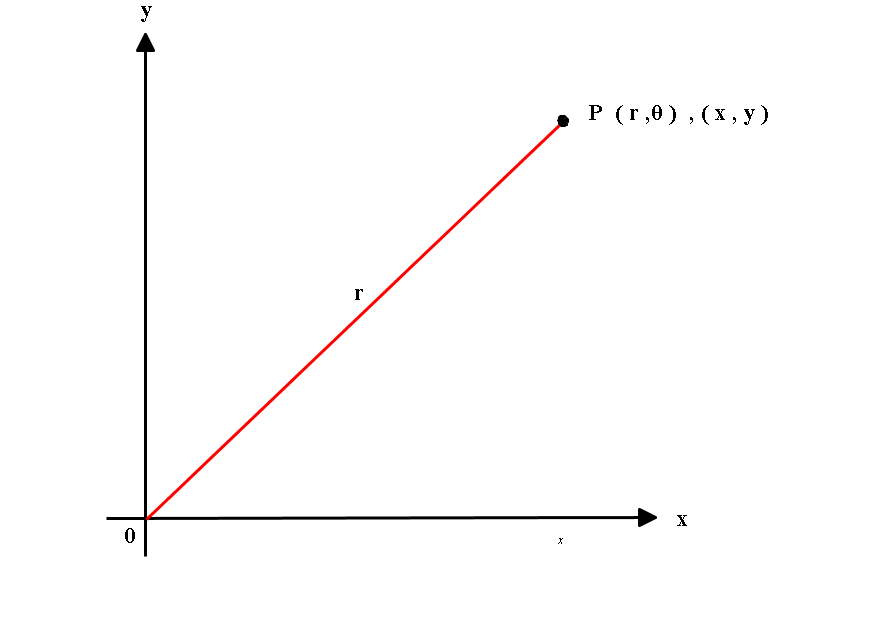
From the diagram we can see that point P has polar coordinates
#( r , theta )# and Cartesian coordinates #(x,y)#.
And #color(white)(88)x=rcos(theta)# , #y = rsin(theta)#
#(x,y) -> (rcos(theta), rsin(theta))#
Also:
By Pythagoras' Theorem :
#r^2=(rcostheta)^2+(rsintheta)^2#
Since:
#x=rcos(theta)# and #y = rsin(theta)#
Then:
#r^2=x^2+y^2# #:. r=sqrt(x^2+y^2)#
We will use these ideas to convert a polar equation to a Cartesian equation.
From example:
#r=sin(theta)-cos(theta)#
Substituting:
#r=sqrt(x^2+y^2)#
#sin(theta)=y/r=y/sqrt(x^2+y^2)#
#cos(theta)=x/r=x/sqrt(x^2+y^2)#
#sqrt(x^2+y^2)=y/sqrt(x^2+y^2)-x/sqrt(x^2+y^2)#
Multiplying by #sqrt(x^2+y^2)#
#sqrt(x^2+y^2)*sqrt(x^2+y^2)=(ysqrt(x^2+y^2))/sqrt(x^2+y^2)-(xsqrt(x^2+y^2))/sqrt(x^2+y^2)#
#x^2+y^2=(ycancel(sqrt(x^2+y^2)))/cancelsqrt(x^2+y^2)-(xcancel(sqrt(x^2+y^2)))/cancel(sqrt(x^2+y^2)#
#x^2+y^2=y-x#
#color(blue)(x^2+y^2+x-y=0)#


